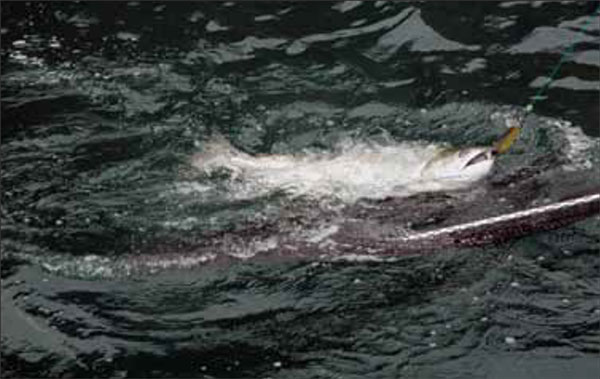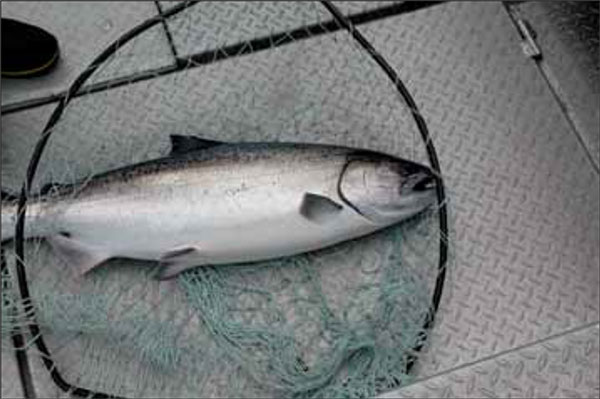By October, most salmon anglers have put their saltwater tackle away for the winter. With the exception of chum salmon and scattered schools of late-running coho, migratory stocks have long since entered the rivers to spawn, and the weather can be cold, wet, windy, or combinations thereof. However, for some die-hards, this period heralds the start of winter Chinook fishing.
“Winter” or “feeder” Chinooks range in size from sublegal “shakers” to hefty “tyees” of 30+ pounds. Their size depends on four variables: the time spent in freshwater prior to migrating to the ocean, age, food availability, and time of year. Juvenile Chinooks might spend anywhere up to a year in their home stream. Shakers are those in their first year or two of ocean living, while at the other extreme are fish of 30 to 40-pounds, which might be in their sixth or seventh saltwater year. If there is an abundance of food, the Chinooks grow accordingly, so ocean conditions or human interference like the roe herring fisheries can have detrimental effects. Finally, the later in the winter season, the better your chances of encountering larger fish which are approaching maturity.

Although feeders of varying year classes are present in most areas throughout the year, they seem to move away from migratory salmon routes while mature fish are present, and then return as the spawners move on.
Winter tactics don’t vary much from what works during warm weather, and mooching with cut plug herring remains quite popular in many Strait of Georgia areas. Trolling accounts for most of the fishing effort, but there are fewer tendencies not to use flashers because the colder water is usually clearer. A good searching technique is to troll one bait down about 40 to 50-feet, and another at 10 to 20-feet off bottom.
If one wants to troll a flasher combination try a Purple Haze hoochy trailed behind a 11-inch Hot Spot Gold “Fever” Mirror Mylar flasher, leader lengths between the attractor and lure can be very important, and what works one day might fizzle the next. If trolling fairly slow try from 36-42 inches, but for fast rolling lengthen leaders to 42-48 inches.

An important item in any winter Chinook angler’s tackle box is a current tide guide for the area to be fished. Use it to determine the peak high and low slack tides, with particular attention paid to early morning changes when Chinooks feed closer to the surface.
Some of the areas mentioned are reasonably protected inshore waters that can be fished with fairly small boats; however, winter winds can be deadly so caution is advised. Exposed offshore waters require large, seaworthy boats equipped with a bare minimum of a dependable compass, either GPS and a VHF radio.
Most areas listed below are productive throughout the winter months, but it can be hit-and-miss. Fluctuations occur at the whim of weather conditions, the ubiquitous El Nino current, the amount of food available, offshore interception by commercial fisheries or assorted predators, or any of the other strange things that go on “out there” in the ocean. ![]()







